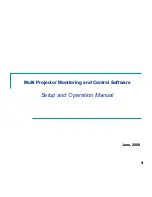
Definitions and Records
Data Definition Language (DDL) Reference Manual — 426798-002
5- 17
Reference Record Structure Syntax
MAXEXTENTS { maximum-extents | constant-name }
sets the maximum number of extents the file can have. The default value for
MAXEXTENTS is 100.
maximum-extents
is an integer from 1 to n, in which n is determined by the available free space in
the file label.
constant-name
is the name of a constant in the open DDL dictionary. The constant value must
be a valid
maximum-extents
value.
NO ODDUNSTR
specifies that all unstructured files be processed as even unstructured files.
Enscribe unstructured files can exist in two ways—as even unstructured or as odd
unstructured. In even unstructured files, an odd byte count given for reading,
writing, or positioning is rounded upward. Odd unstructured files have no upward
rounding; you always read, write, or position at the byte count you give.
REFRESH
forces the operating system to copy the file’s label to disk whenever the file’s file
control block is updated.
SERIALWRITES
specifies that writes to the mirror disk be done serially. If you do not specify
SERIALWRITES, mirror disk writes will be done in parallel.
VERIFIEDWRITES
specifies that disk writes be verified by the disk process. Disk writes are verified by
comparing the data on the disk with the data in memory. If you do not specify
VERIFIEDWRITES, disk writes will not be verified.
Reference Record Structure Syntax
The following is the syntax of a reference record definition.
def-name
is a DDL name that identifies an existing definition in the open DDL dictionary.
When you use this form, you must declare any key fields with a key assignment at
the end of the RECORD statement. You cannot use a KEYTAG clause to declare
key fields with a reference record structure.
DEF[INITION] IS def-name
















































